Author : Building Code Trainer
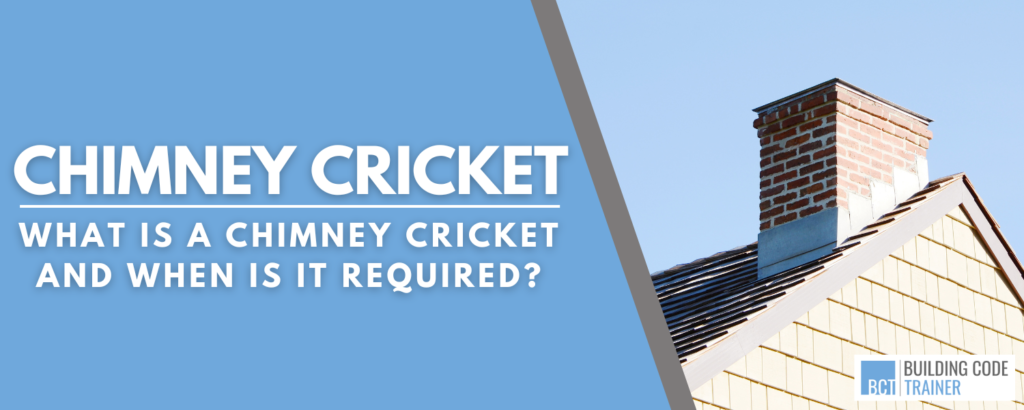
Chapter 10 of the 2021 International Residential Code regulates two types of fireplaces. Those that are constructed on-site using masonry and other approved materials, and those that are factory-built.
While the chimney of the factory-built fireplace relies on the listing and labeling of the chimney itself, a masonry chimney relies on the prescriptive requirements outlined in Chapter 10 of the IRC, specifically Section R1003.
Before we get into the requirements of masonry chimneys, let us properly define what a masonry fireplace is and its chimney based on the definitions in the code.
Masonry fireplace – A field-constructed fireplace composed of solid masonry units, bricks, stones or concrete.
R1003.1 Masonry Chimney – A masonry chimney is a chimney constructed of solid masonry units, hollow masonry units grouted solid, stone or concrete, hereinafter referred to as masonry. Masonry chimneys shall be constructed, anchored, supported and reinforced as required in this chapter.
While the code uses the term “masonry fireplace” and “masonry chimney”, we can see based on the definitions in the code that it also refers to fireplaces and chimneys built using any of the noncombustible materials mentioned above.
Now that we know what a masonry chimney is, let us discuss below what the chimney cricket requirements are for masonry chimneys subject to the IRC.
What is a Chimney Cricket?
A chimney cricket helps to divert the flow of water away from the roof around a chimney. The area of the roof around the chimney is built up to a specific height that will help to divert the flow of water.
This specific dimension depends on the roof slope and the width of the chimney.
To see what this visually looks like, lets look at the image below:
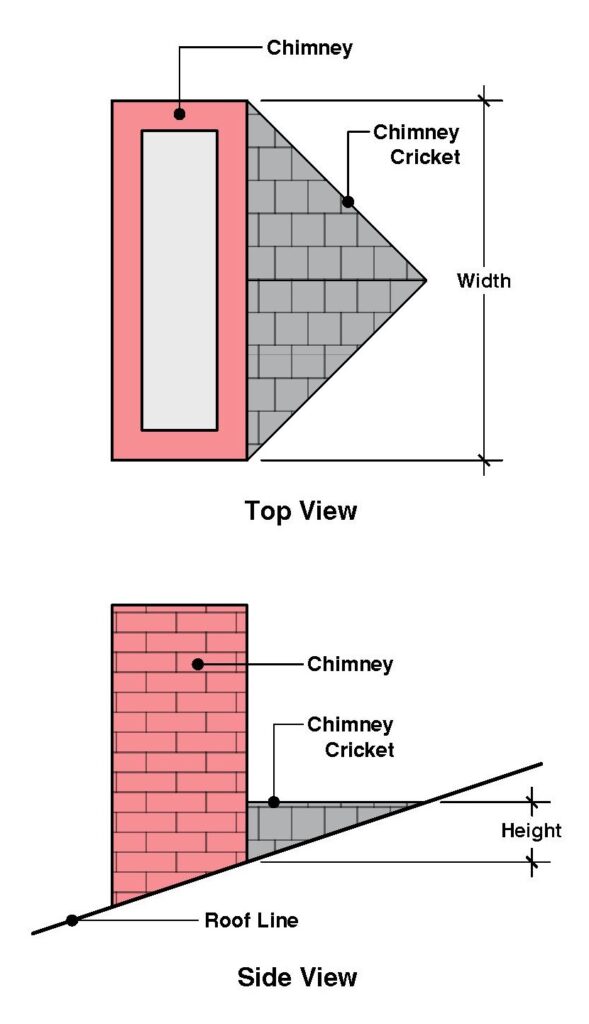
Why Do You Need a Chimney Cricket?
The purpose of your roof is to get water off of it by allowing the water to flow down but when a chimney is present, there is a chance of the flow of water being restricted thus causing potential leaks.
A chimney cricket allows such conditions to be avoided by allowing the water to flow around the chimney and off your roof instead of being trapped behind the chimney. This is why is is important for a chimney to have a cricket.
When Should A Chimney Have a Cricket?
The 2021 International Residential Code says when the width of the chimney parallel to the ridgeline is greater than 30 inches, a chimney cricket shall be provided.
Lets take a look at the code section.
R1003.20 Chimney crickets. Chimneys shall be provided with crickets where the dimension parallel to the ridgeline is greater than 30 inches and does not intersect the ridgeline. The intersection of the cricket and the chimney shall be flashed and counterflashed in the same manner as normal roof-chimney intersections. Crickets shall be constructed in compliance with Figure R1003.20 and Table R1003.20.
Based on this code section we can see that the chimney will require a cricket when the width is greater than 30 inches.
To see what this visually looks like, lets look at the image below:
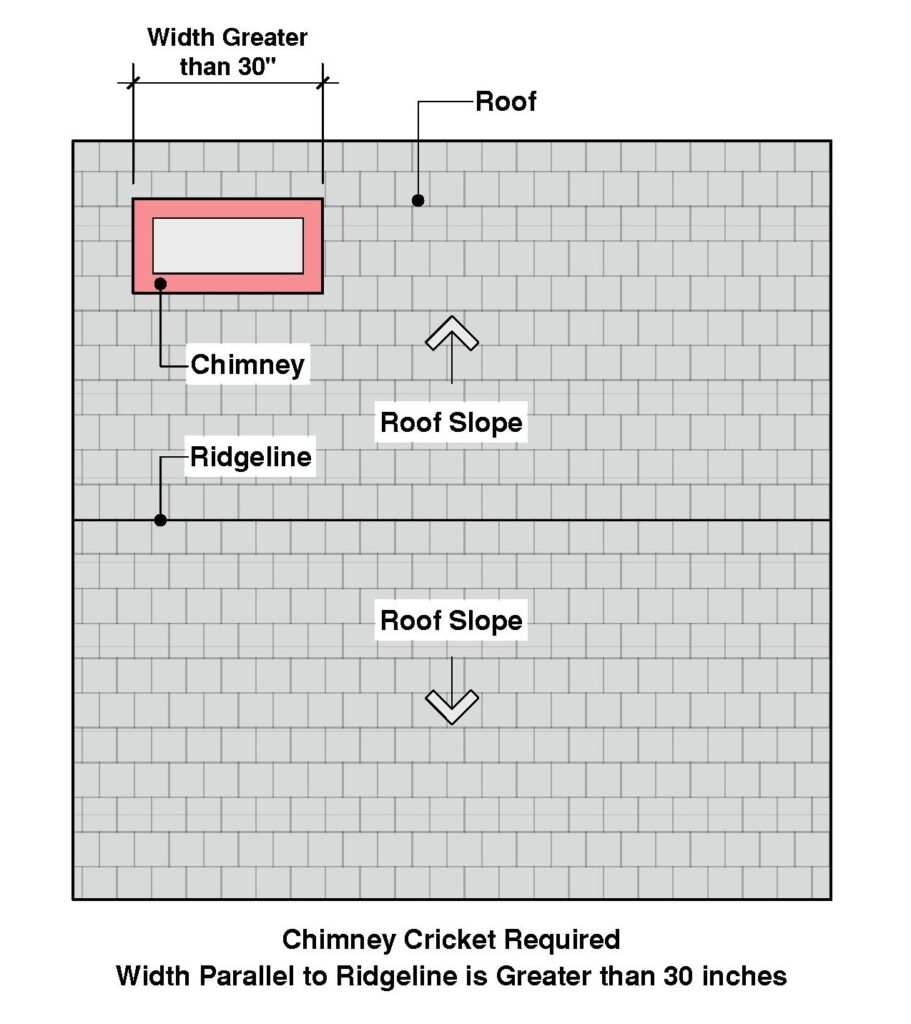
Do All Chimneys Need A Cricket?
Let me put it this way, while it is good for every chimney to have a cricket, per code it is not required for a chimney 30 inches or less in width.
To see what this visually looks like, lets look at the scenario given below:
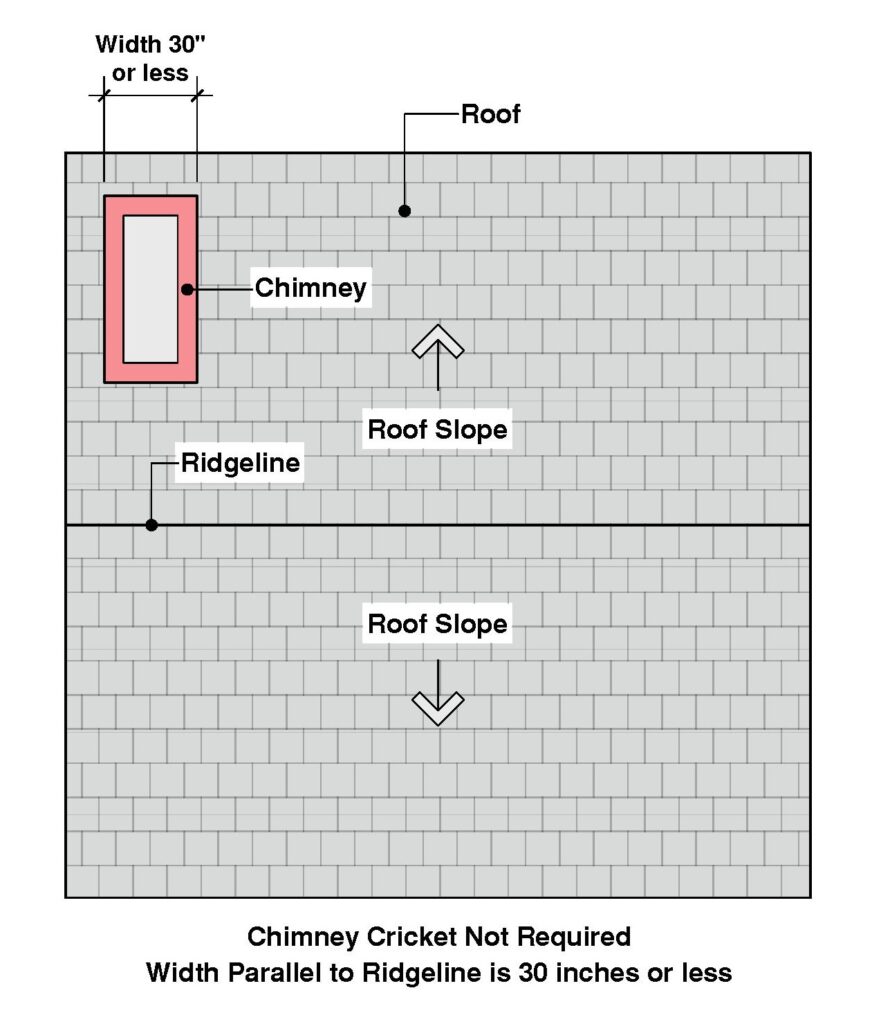
In this scenario, even though once side of the chimney may be greater than 30 inches, the side of the chimney parallel to the ridgeline does not require one when that width is 30 inches or less.
Another time the code does not require a cricket is when the chimney intersects the ridgeline.
To see what this visually looks like, lets look at the scenario given below:

Regardless of the width, given this scenario the chimney does not create a condition where the water can be trapped around the chimney.
How Tall Should a Chimney Cricket Be?
Referring back to Section R1003.20 above, it specifies that the dimensions of the cricket shall be in compliance with Table R1003.20.
Here is the table to determine the height of the cricket.
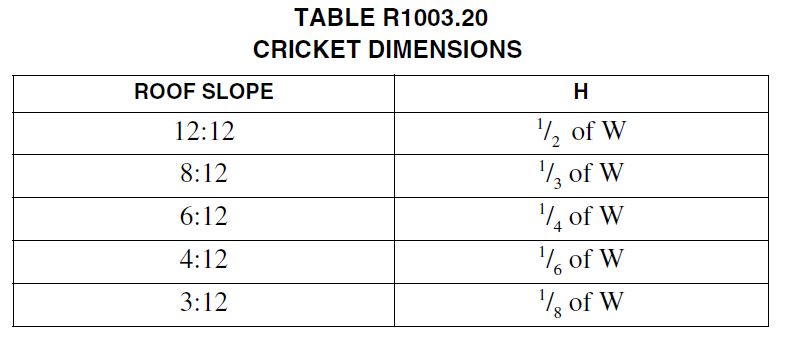
Based on this table we need two pieces of information, the roof slope and the width of the chimney parallel to the ridgeline.
For Example if the width of the chimney is 4 feet on a roof slope of 6:12, the height of the chimney cricket needs to be 1 foot high.
Final Words
The chimney cricket is an important feature to ensure water will properly flow around the chimney instead of being trapped behind it causing potential leaks. Having proper understanding of when a chimney cricket needs to be provided is of utmost importance to any code professional.
We just looked at several examples of when a cricket is required and when it is not along with what dimensions the cricket needs to be.
For more information regarding chimney crickets for masonry chimneys subject to the IRC, be sure to check out Section R1003.20 of the 2021 International Residential Code.
Related Articles to Read:
- What is an ICC Certification & How to Get ICC Certified
- B1 Residential Building Inspector Certification Exam Prep
About the Author

Building Code Trainer
AuthorThis site is run and maintained by a Certified Building Official, Plans Examiner, and Inspector. With a Bachelors of Science Degree in Construction Engineering along with holding multiple ICC certifications, the Author of this site has over 15 years of experience within the construction industry.
